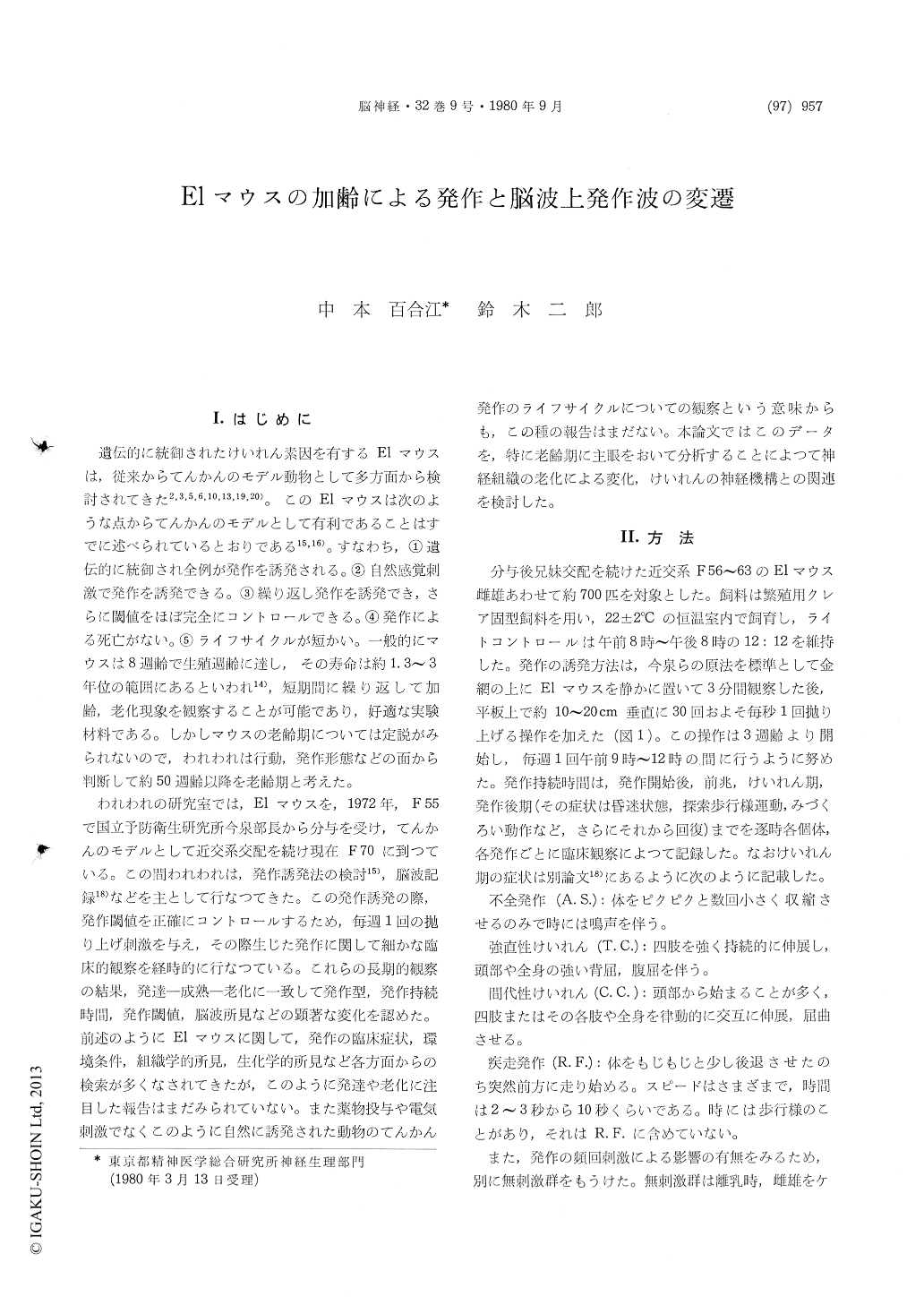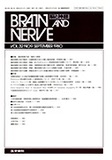Japanese
English
- 有料閲覧
- Abstract 文献概要
- 1ページ目 Look Inside
I.はじめに
遺伝的に統御されたけいれん素因を有するElマウスは,従来からてんかんのモデル動物として多方面から検討されてきた2,3,5,6,10,13,19,20)。このElマウスは次のような点からてんかんのモデルとして有利であることはすでに述べられているとおりである15,16)。すなわち,①遺伝的に統御され全例が発作を誘発される。②自然感覚刺激で発作を誘発できる。③繰り返し発作を誘発でき,さらに閾値をほぼ完全にコントロールできる。④発作による死亡がない。⑤ライフサイクルが短かい。一般的にマウスは8週齢で生殖週齢に達し,その寿命は約1.3〜3年位の範囲にあるといわれ14),短期間に繰り返して加齢,老化現象を観察することが可能であり,好適な実験材料である。しかしマウスの老齢期については定説がみられないので,われわれは行動,発作形態などの面から判断して約50週齢以降を老齢期と考えた。
われわれの研究室では,E1マウスを,1972年,F55で国立予防衛生研究所今泉部長から分与を受け,てんかんのモデルとして近交系交配を続け現在F70に到つている。この間われわれは,発作誘発法の検討15),脳波記録18)などを主として行なつてきた。この発作誘発の際,発作閾値を正確にコントロールするため,毎週1回の抛り上げ刺激を与え,その際生じた発作に関して細かな臨床的観察を経時的に行なつている。
An El mouse is an inbred mutant strain suscepti-ble to epileptic seizures. The mouse can be made to exhibit seizures repetitively by a repetition of stimuli. Generally a life cycle of a mouse is rela-tively short. Taking advantage of these features, we investigated seizure phenomena of old El mice as a model of late epilepsies. About seven hundred El mice of F 56-63 were used for clinical obser-vations and EEG recordings. The stimulation of our standard method, which was composed of two procedures, observation and tossing-up, was applied once a week since 3 weeks of age. Thresholds for seizures were kept very low since about 25 weeks of age, but were raised considerably around the age of 80 weeks (Fig. 1). In the senile mice, clinical manifestations of seizures showed some characteristic features, which were predominantslow clonic convulsions during the convulsive stage and frequent adversive convulsions, clonic con-vulsions and status epilepticus without any parox-ysmal discharges in the EEG at the postictal stage (Fig. 2A, Fig. 6). These clinical features of seizures were also observed in the mice which were not exposed to stimulations until their senescence (Fig. 2B). Durations of seizures were prolonged to the mean of about 9 min in the senile mice, which was relatively longer than that in younger adults (Fig.3). In other words, it took longer for the senile mice to recover than for the younger ones.In the EEGs of the convulsive stage of the senile mice also slow spikes occurred predominantly instead of fast spikes in seizures of younger animals, and slow waves prevailed at the latter half of that stage (Fig.5).
The seizure phenomena in the senile El mice as stated above are considered not to be attributed to frequent occurrence of seizures, but to be attributed to aging processes both in metabolic and functional aspects of the brain.

Copyright © 1980, Igaku-Shoin Ltd. All rights reserved.


